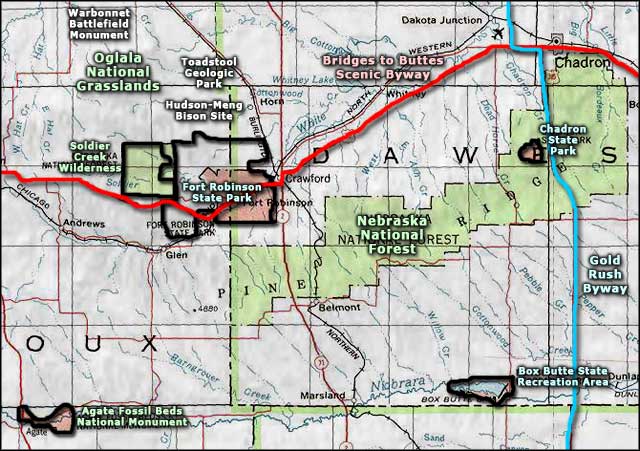Agate Fossil Beds National Monument
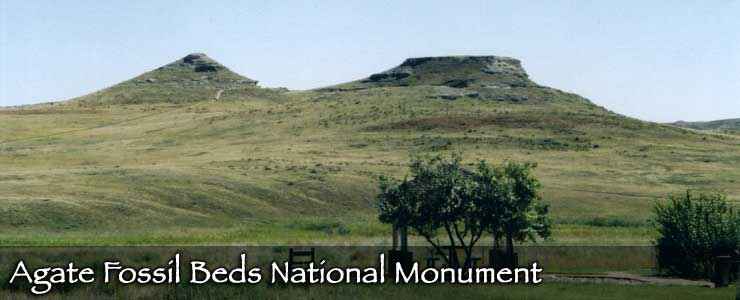
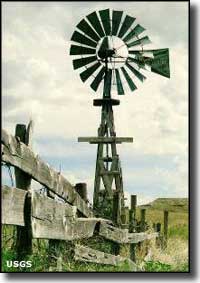
Agate Fossil Beds National Monument is a 3,200-acre site in the grasslands of western Nebraska. Agate Fossil Beds is best known for the large number of well-preserved Miocene-era mammalian fossils found in the 1890's at dig sites on University and Carnegie Hills. Species found here include Stenomylus (a camelid gazelle), Daedon (a giant pig-like ungulate), Palaeocastor (a cross between a beaver and a groundhog that dug corkscrew-like burrows) Menoceras (a rhinoceros the size of a pony), Amphicyon (a cross between a dog and a bear) and Miohippus (an ancestor of the the modern horse).
The property was part of a working cattle ranch owned by Captain James Cook. There's a museum in the Visitor Center that offers displays of more than 500 artifacts from the Cook Collection of Plains Indian Artifacts. Agate Fossil Beds National Monument was authorized by Congress in 1965 but wasn't established until 1997. In 1977, the Harold J. Cook Homestead was listed on the National Register of Historic Places.
The Visitor Center and Museum at Agate Fossil Beds National Monument is open in summer (Memorial Day through Labor Day) from 8 am to 6 pm. Off-season hours: 8 am to 4 pm. The trails are open from sunrise to sunset all year round. The Visitor Center offers a picnic area but camping is not allowed on the property. Agate Fossil Beds National Monument is located on State Road 29, 22 miles south of Harrison and 34 miles north of Mitchell.
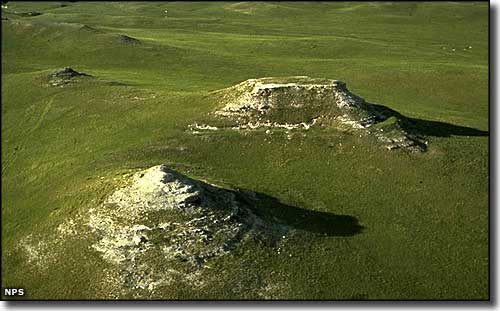
An aerial view of Agate Fossil Beds National Monument
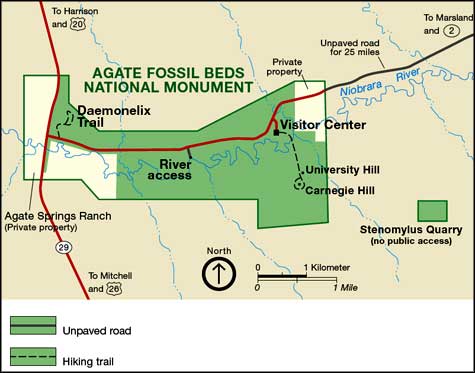
Photo of University and Carnegie Hills courtesy of Wikipedia userid Nebular110, CCA-by-SA 2.5 License
